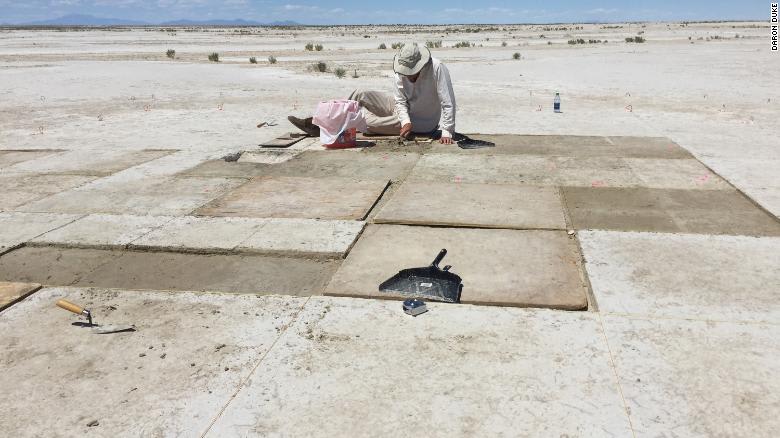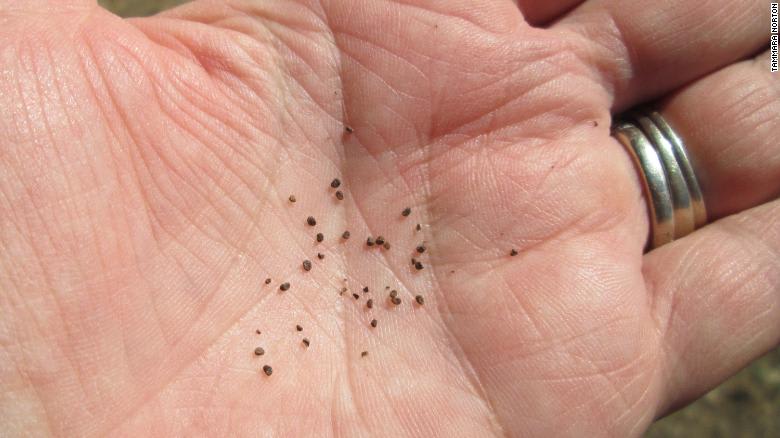دبي، الإمارات العربية المتحدة (CNN) -- شكل نبات التبغ ثروات للبشرية، واليوم تُستخدم هذه المادة ويُساء استخدامها على حد سواء من قبل مليار شخص حول العالم.
وأظهر بحث جديد أن هذه العادة تعود إلى العصر الحجري.
وأشارت البذور المتفحمة المكتشفة في موقد قديم استخدمه الصيادون في ما يعرف الآن بولاية يوتا الأمريكية، إلى أن البشر استخدموا التبغ منذ أكثر من 12 ألف عام، أي قبل 9 آلاف عام عما تم توثيقه سابقًا وقبل أن تترسخ الزراعة في الأمريكتين.
وأشارت الدراسة إلى أنه "يمكن القول إن التبغ كان له تأثير أكبر على الأنماط العالمية في التاريخ أكثر من أي مادة أخرى ذات تأثير نفسي، ولكن مدى عمق الروابط الثقافية كان محل نقاش على نطاق واسع".

وأوضح دارون ديوك مدير العمليات لدى مجموعة البحوث الأنثروبولوجية "Far Western" أن الموقد اكتُشف في صحراء سولت لايك، وهي بحيرة كبيرة جافة في شمال ولاية يوتا الأمريكية، عام 2015 خلال مسح أثري روتيني.
وقال ديوك، المؤلف الرئيسي لدراسة عن اكتشاف التبغ نُشرت الإثنين في مجلة Nature Human Behavior، إنه كان "لطخة سوداء صغيرة على المسطحات الطينية المفتوحة في صحراء سولت لايك".
وقام ديوك وزملاؤه بالتنقيب في الموقع، الذي كان محاطًا بقطع أثرية وعظام حجرية، والتي تعرض بعضها لعوامل التعرية.
ولاحظ عالم النبات في الفريق البذور بمجرد عودته إلى المختبر.
وكانت البذور صغيرة الحجم بحيث لا يمكن تأريخها بشكل مباشر، ولكن التواريخ من ثلاث عينات من الكربون والتي استُخرجت من الموقد، تشير إلى أن البشر في العصر الحجري أوقدوا النار منذ حوالي 12،300 عام.
وفي ذلك الوقت، كانت الصحراء أرضًا رطبة ومصدر جذب كبير للحياة البرية والمستوطنين الأوائل.
وأشارت رؤوس الرماح المصنوعة من حجر السج التي عُثر عليها في الموقد، إلى أن البشر جابوا مسافات بعيدة لاصطياد طرائد كبيرة الحجم.
ويأتي النيكوتين من نبات التبغ، وموطنه الأصلي الأمريكتين، وكان يُستخدم من قبل السكان الأصليين لخصائصه ذات التأثير النفساني قبل وقت طويل من وصول المستوطنين الأوروبيين، الذين أعادوا هذه الممارسة إلى أوروبا.
واستبعد الفريق احتمال أن تكون البذور قد وصلت إلى الموقد بالوسائل الطبيعية، إما عن طريق محتويات معدة طيور البط والطيور المائية الأخرى التي عُثر على بقايا رفاتها في الموقع أو نتيجة استخدام نبات التبغ كوقود.
وقال ديوك إن كلا التصوّرين غير محتملين، موضحًا أن نباتات التبغ سامة ولا تتغذى عليها الطيور أو الحيوانات.
والتبغ لا ينمو في الأراضي الرطبة، لذلك يجب أن يكون قد أُحضر من مكان آخر، كما أنه يفتقر إلى الأنسجة الخشبية لتوليد شعلة حريق ذات حجم كبير.
ولا تحتوي بذور التبغ على النيكوتين، ولكن وجودها أشار إلى أن البشر كانوا يتعاملون مع أجزاء النبات التي لها تأثير الثمالة، أي الأوراق والسيقان.
واقترح مؤلفو الدراسة أنه ربما تم مضغ التبغ أو امتصاصه في قطعة من الألياف النباتية، ثم بصق البذور في شعلة النار، إذ عُثر على قطع من التبغ الممضوغ في كهوف المنطقة، بينها كهف يبعد فقط 65 كيلومترًا إلى الشمال عن الموقد.
ومن الممكن أيضًا أن يكون التبغ مدخنًا، وقبل هذا الاكتشاف، أشارت بقايا النيكوتين على غليون التدخين إلى أن مستخدمي التبغ الأوائل كانوا يعيشون في أمريكا الشمالية منذ حوالي 3 آلاف عام.
وأشارت نتائج الدراسة إلى أن البشر استخدموا التبغ لآلاف السنين قبل أن بصبح من الأنواع المدجنة، أي الأنواع التي خضعت لعملية تطورية من قبل البشر لتلبية احتياجاتهم.
وقال ديوك إنه من المحتمل أن البشر كانوا "يلهون بالنباتات" التي كانت مفيدة بالنسبة لهم لآلاف السنين قبل ظهور الزراعة.
